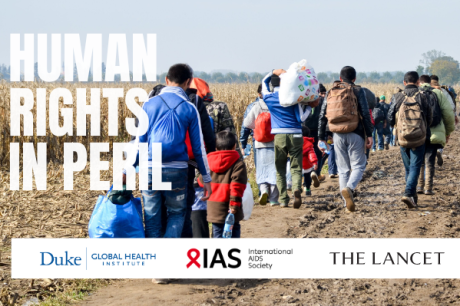
A resourceful wheelchair made from shopping cart wheels, bike tires and attached to a plastic deck chair
Published June 24, 2014, last updated on October 5, 2017 under Voices of DGHI
By Betsy Asma, MSc-GH Student
Engineering World Health Summer Institute
My first walk through the hospital, I saw a mother holding a saline bag at shoulder height while her teenage boy laid on the ground, waiting for an exam room under a small sliver of shade. Waiting times here are often listed in number of days as opposed to number of hours.
Our group has been visiting Hospital de Amistad-Japon in Granada every Friday to practice our technical repair skills and days in the hospital are spent cleaning and repairing the countless machines required to run a hospital. The list continues to grow of machines we have returned into circulation; ventilators, centrifuges, microscopes, autoclaves, pediatric nebulizers, and even an infant incubator!
Over the past month, I’ve really bonded with one of the engineering technicians named Jimmy. Although I speak very limited Spanish, we’ve bonded over a shared ability to laugh at ourselves while trying to communicate. While we were supposed to be cleaning an industrial sized dryer, Jimmy and took a much needed water break and got lost in conversation. Because everything we want to communicate requires so much effort, I often have conversations here that are very direct and don’t bother with polite small talk. Jimmy was on a roll when our conversation jumped right into “¿Crees en Dios?” (Do you believe in God?)-which wasn’t too much of a surprise given the huge importance religion plays in all aspects of Nicaraguan life. The next question Jimmy asked me, I still really don’t know the answer too, definitely cannot explain in English, let alone piece together a response in broken Spanglish. “Why is Central American so poor compared to the US?”
We talked about corruption in the government and lack of educational opportunities but even those seem like false pretenses for a country who I view with so much potential, smart people and abundant natural resources.
Another adventure I had with Jimmy involved a trip into the operating room to repair the leaking AC unit. We had to “scrub up” in teal scrubs and hair coverings just to enter the area, although I found it ironic that the doors to the operating room opened straight to the outside, and sterility seemed to be more of just an illusion than an actual fact. The operating room was clean, yet not the stark white and polished stainless steel which I pictured, and nurses huddled around a Spanish TV soap opera made me chuckle as we stepped inside. After repairing the AC unit, we had to wait for a set of keys, and knowing “Nicaraguan time”, we decided to sit down. The only bench in the hallway was blocked by a gurnee, which Jimmy pulled away, and then pulled back up to us like a picnic table, due to limited space in the hallway. The gurnee was occupied by a middle-age woman waking up from her aesthesia. She was naked but wrapped in a warm wool blanket, with a clipboard placed on top of her shins, and no attending doctor in sight. A solution was slowly dripping into the crevice of her elbow and while Jimmy and I waited, her first glimpse of consciousness was connecting with my blue eyes (not a common eye color here-pointed out to me multiple times already). I was most struck by the different limits to patient confidentiality and privacy (there is none!). I’ve been paraded into countless patients’ rooms with procedures at various stages of undress and nobody bats an eye. Exam and recovery rooms are almost always shared with 5-6 patients in each. The cultural around sickness in Nicaragua is more focused on the community aspect of healing. Sickness is just a fact of life-everybody gets sick so there is no need to keep it behind closed doors. It’s a very different world but I can’t help reflecting on that maybe our perceived standards of privacy may be excessive and not completely necessary for the most efficient patient recovery.


